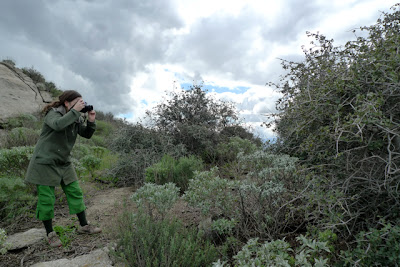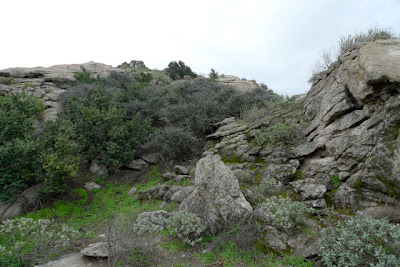Fig and Lichens
In September of 2010 I visited the Castagno dei 100 Cavalli for the first time. It was the height of Mediterranean summer, over-ripe, really, and the Castagno was no exception. Its half-dome canopy was so heavy with foliage and chestnuts that one could barely see the branches for the leaves. I made some photos, but came away thinking the umami of it (I like to keep my mixed metaphors vegetarian friendly) was somewhere underneath that surface: while the lush growth was impressive, it is the structure of its split-and-spread trunk that really tells the story of what it's like to be alive for 3,000 years.
Moss on the Castagno, 2012
Since I was returning to Europe to install my exhibition at the Staatliche Kunsthalle Baden-Baden, I took a cue from the death of the Senator Tree earlier this year, and decided to seize this opportunity to return to the Castagno. Spring was well underway in the tree-lined streets of that southern German town last week. Their chestnuts were already well-leafed, and I worried that I had come all this way just to face the same obfuscation. But I had forgotten an all important factor: it's not just latitude that matters; altitude can make a world of difference.
Hail and Lava
I arrived in Sant'Alfio in the dark. I drove my rented Smart Car through the narrow, steep-walled switchbacks and up (then back down) an unsigned one-way street. Once safely tucked in at my favorite agroturismo, a thunderstorm settled in, then hail pelted down in loud, if brief, intervals, stirring up the yard dogs. In the morning, a layer of perfectly round hail covered the previous layer of lava spit down from Mount Etna.
By the time I had made my way over to the Castagno, the hail had already melted, but I could see it had knocked a few tender leaves from its branches. The high altitude slows the coming of spring (and it's not hard to believe that its unseasonably cold here, as I write under a blanket in an old stone farm building.) I welled up with tears at the sight of its bare branches flecked with green, at the beauty of its form...and in relief for not having come all this way for naught.
The weather changed every few minutes, clouds rolling in and just as soon rolling right out again. I explored the perimeter and the adjacent hazelnut orchard with my cameras. This morning I returned once more to meet Alfio, a gate keeper of the tree here in Sant'Alfio, whom had kindly held an umbrella over my head in 2010 while I photographed through our first meeting. The clouds persisted, but the precipitation did not, and I was able to see much more this time than last. I saw the heavy sections of the trunk and new suckers pushing forth, connected below the surface by a massive root system. I saw the details of gnarled and moss-covered swirls of bark. And I saw the deep charcoal of one section that I had overlooked before:
"Fire," I asked? Yes. Someone had tried to grill sausages inside the tree, and had nearly burnt it down. The fence has been up ever since.


































